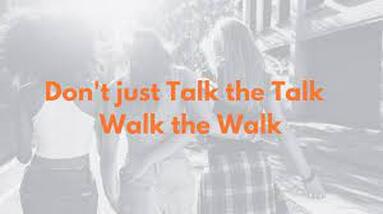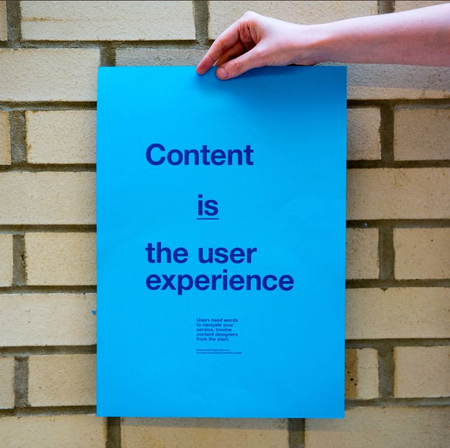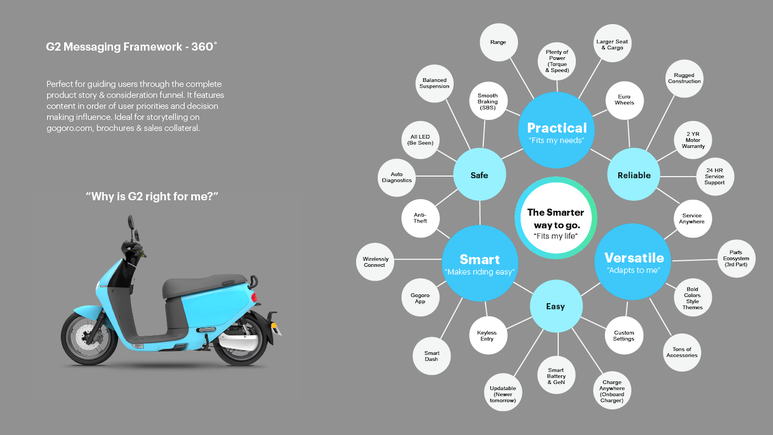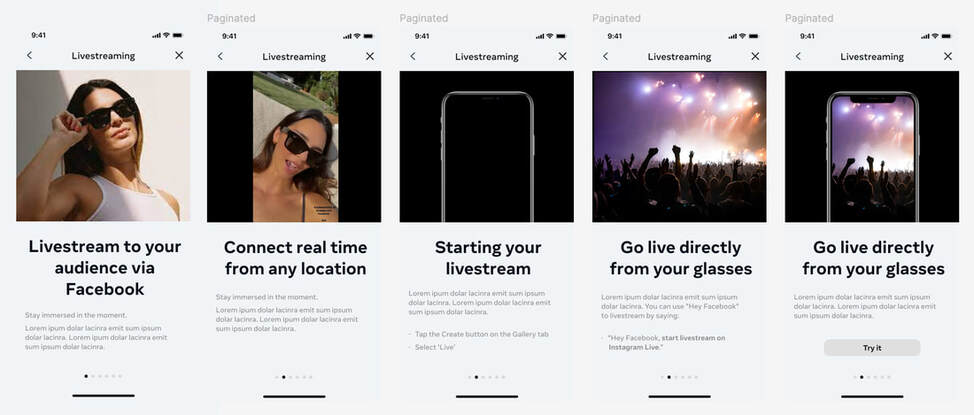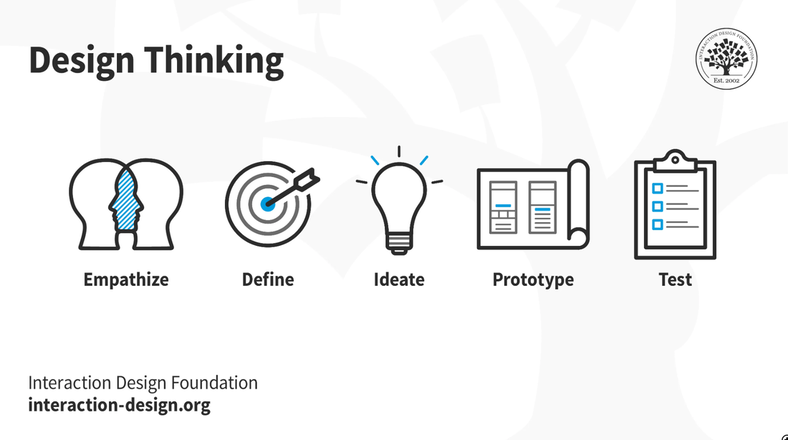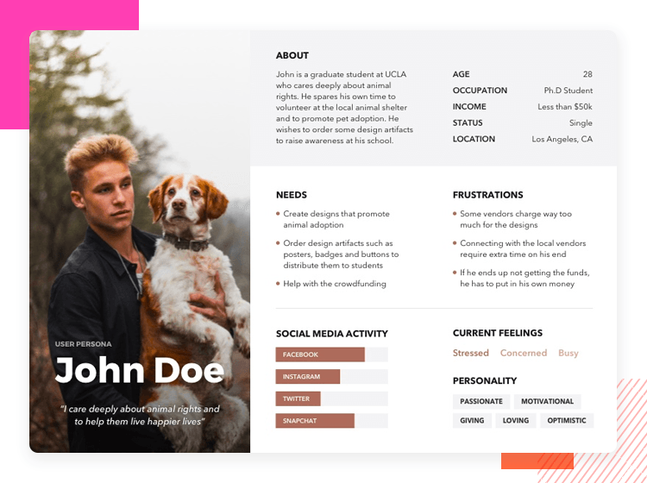Embracing Design in Content Design
Tools for content designers who don’t consider themselves “designers.”
What’s in a name?
Turns out it's a lot when it comes to content design.
The shift from “content strategy” to “content design'' that occurred in companies like Facebook, AirBnB and Shopify in the early 2010’s represented an evolution of the craft. It didn’t happen overnight and it wasn’t just a rebrand. It was a hard-won and meaningful progression of the craft and a big win for future content designers. For one, the new name helps address core content strategy challenges, including:
Now that we are “designers” by title, it’s crucial to pay it off. Here are 4 ways content designers can embrace their design side to level up their design game, but first, let’s get one thing out of the way:
Content Design is Design
Content designers design with words (text), but we also focus on where the words live (design). Sarah Richards, widely credited with coining the term content design after consolidating a messy amalgam of hundreds of government websites into a user-focused “storefront,” defines content design as "designing the entire user journey through the lens of words." Content designers are not just writers, but the designers of content—envisioning and planning the creation of interactive systems of content.
Kristina Halvorson, the author of the bible, Content Strategy, says “content is what fuels the user experience” and is why “content strategy [was] brought to the table with design.” Content design “bridges the gap” between content strategy and strategic design thinking.
Turns out it's a lot when it comes to content design.
The shift from “content strategy” to “content design'' that occurred in companies like Facebook, AirBnB and Shopify in the early 2010’s represented an evolution of the craft. It didn’t happen overnight and it wasn’t just a rebrand. It was a hard-won and meaningful progression of the craft and a big win for future content designers. For one, the new name helps address core content strategy challenges, including:
- Starting content strategy at the beginning of projects
- Contributing to visual designs and getting content into designs early
- Effectively partnering with design (to reveal a sum greater than the parts)
- Promoting a better understanding of the craft and process
Now that we are “designers” by title, it’s crucial to pay it off. Here are 4 ways content designers can embrace their design side to level up their design game, but first, let’s get one thing out of the way:
Content Design is Design
Content designers design with words (text), but we also focus on where the words live (design). Sarah Richards, widely credited with coining the term content design after consolidating a messy amalgam of hundreds of government websites into a user-focused “storefront,” defines content design as "designing the entire user journey through the lens of words." Content designers are not just writers, but the designers of content—envisioning and planning the creation of interactive systems of content.
Kristina Halvorson, the author of the bible, Content Strategy, says “content is what fuels the user experience” and is why “content strategy [was] brought to the table with design.” Content design “bridges the gap” between content strategy and strategic design thinking.
Writing is never going to be valued as greatly as design within an organization
simply because everybody can write and not everybody can design.
Kristina Halvorson
And if you're not yet convince, think about this—what happens when a user visits an app or site with clunky content? They abandon the app or site for a another, right? But why?
The words? The prose? Because the competitor’s information is better?
They leave because the design of the content is better.
The words? The prose? Because the competitor’s information is better?
They leave because the design of the content is better.
Now that we got that out of the way, here are are 4 ways to fuel your design Mojo:
1. Lean into Design and Walk the Talk
One of the first things content designers can do to embrace "design" in their titles is to talk with, think like, and build meaningful partnerships with designers. Speak to designers, leaning in to understand their needs, pain points, and ideas. Reflect back to them what you heard and you’re on your way to earning an important ally.
Promote a culture of constant collaboration
Collaborate with product design through each stage of the design process. Form shared design goals and milestones (key to know what reviews you BOTH will share your work in). This partnership is as natural as peanut butter and chocolate…both disciplines start at the very same point—the user. Build empathy for the user and their journey together. You'll find that your processes are similar and your resulting content is more contextual and impactful.
1. Lean into Design and Walk the Talk
One of the first things content designers can do to embrace "design" in their titles is to talk with, think like, and build meaningful partnerships with designers. Speak to designers, leaning in to understand their needs, pain points, and ideas. Reflect back to them what you heard and you’re on your way to earning an important ally.
Promote a culture of constant collaboration
Collaborate with product design through each stage of the design process. Form shared design goals and milestones (key to know what reviews you BOTH will share your work in). This partnership is as natural as peanut butter and chocolate…both disciplines start at the very same point—the user. Build empathy for the user and their journey together. You'll find that your processes are similar and your resulting content is more contextual and impactful.
Does your company have UX researchers?
For the lucky ones, embrace the researcher and draw them into your work with product design to form a triad. UX researchers have what you need to create the right content for the right users in the right places. On top of that, it’s sometimes easier to draw the designer into a triad than a partnership (and takes the focus off of content design).
For the lucky ones, embrace the researcher and draw them into your work with product design to form a triad. UX researchers have what you need to create the right content for the right users in the right places. On top of that, it’s sometimes easier to draw the designer into a triad than a partnership (and takes the focus off of content design).
|
Brush up on user experience design. Think of user experience (UX) as a realm that exists between content design and product design and meet your design partner halfway (or more). Understanding UX will make you a better designer and help you communicate beyond the words.
Content designers also need to walk the talk to socialize their title. This isn’t about self-branding (although that’s important too), it’s about informing and creating space for your work. Achieve this by:
A good content designer needs to have design intuition, and be able to speak the language of interaction design and product strategy. |
|
2. Think and Communicate Visually
Content designers use words, but we also focus on where the words live and that’s the design part. To effectively create and share work, content designers need to think and communicate visually.
Thinking visually starts with focusing on the end result of your work—the content the user needs and where they consume it (app, site, flow, etc.). Create a user persona and take a step further to create a user journey map. The entire team will benefit from seeing when, where, and how the user interacts with your product.
Content designers use words, but we also focus on where the words live and that’s the design part. To effectively create and share work, content designers need to think and communicate visually.
Thinking visually starts with focusing on the end result of your work—the content the user needs and where they consume it (app, site, flow, etc.). Create a user persona and take a step further to create a user journey map. The entire team will benefit from seeing when, where, and how the user interacts with your product.
Visualize the user. Think of them using your app. Where are they? What else are they doing? This takes practice, but once you start thinking this way, the communication will follow.
Communicating visually is about collaborating on the designs and flows from the start and crafting your work visually within the designs. Partner with product design to shape a visual of the flow or experience. If you use Figma (God’s gift to content design), partner on the flow so both the design and the content are in context to the user and their needs. Not only will seeing your words in the design help you refine your content, but it will garner far better feedback.
Ask yourself:
- What are you trying to show?
- How can this be visualized?
- Can you leverage a Figma file, wireframe or prototype?
3. Embrace Design Thinking and User-Centered Design
You don’t need to master visual or product design, but you do need to embrace it. Embracing design means understanding the design process and speaking the broader design language. The good news? You are probably already doing it.
Design thinking and user-centered design have been applied to content and product design for some time. By following the steps and theories of Design thinking and user-centered design, we can link our process to that of product design and speak a shared language, follow a shared process (and timeline), and project a shared process to the cross-functional team.
Design Thinking
Design thinking is an approach to problem-solving and innovation anchored in human-centered design. Design thinking focuses on solving a problem and content designers can use the process to solve for information design and delivery. The process works well for product design and content design and is broad enough to be the process for the entire cross-functional team.
User-centered Design
You can think of user-centered design as a belief system with a core belief that we optimize products around how users can, want, or need to use the product, rather than expecting users to adapt their behavior to accommodate our product. The real juju of user-centered design is that its core principles and steps align with the same steps content designers use, offering another process to share with product design.
Sharing a process with Design helps our Practice
A shared process promotes constant collaboration with product design and makes it easier for the cross-functional team to understand your work. The best content comes from a synergy created by content design and PD during the design process. That’s because content and design are consumed together and can be leveraged differently to over- or under-weight each depending on the need.
Constant collaboration enables content design and product design to identify the user, needs and a strategy together and tackle the remaining stages in sync. Content appears in every comp reviewed, adding efficiency, and clarifying the role of content design.
Sharing a process aligns the cross-functional team by a process
Successful content design is a collaborative process with designers, researchers, product managers, and developers working together to create cohesive interfaces that are functional, aesthetically pleasing, and deliver information in compelling ways. But how can we achieve a collaborative process if we don’t share a process?
Collaboration requires alignment and understanding of the other functions. By leveraging the design thinking or user-centered design process, content design can align with the cross-functional team, collaborate more effectively, and create more impact.
4. Own the Voice of the User and Storytelling
A content designer's job is to determine how to best utilize and frame pieces of content to deliver enjoyable and compelling experiences to users at the right place and time. We design for users. The user’s needs (coupled with business needs), drive the requirements for our designs.
Content design owns the voice of the user
This is the way the user speaks, the words they use, and the way they consume information. Owning the voice of the user gives content design an opportunity to be the person in the room who knows the most about the user. Leverage the research and use tools like personas and user journeys to create a visual of the user. Share this with the cross-functional team and it--and you in the process--become a northstar for the team.
Content design owns the product narrative
The product narrative is the story we tell about our products. Content designers craft the product narrative by building a story that captures attention, differentiates the product, and drives interest. The product narrative is easier to craft when you know the voice of the user. In this way, content design has a leg up. This story, revolving around the user and the product or experience we are offering, becomes a through line or backbone of the design.
A content designer's job is to determine how to best utilize and frame pieces of content to deliver enjoyable and compelling experiences to users at the right place and time. We design for users. The user’s needs (coupled with business needs), drive the requirements for our designs.
Content design owns the voice of the user
This is the way the user speaks, the words they use, and the way they consume information. Owning the voice of the user gives content design an opportunity to be the person in the room who knows the most about the user. Leverage the research and use tools like personas and user journeys to create a visual of the user. Share this with the cross-functional team and it--and you in the process--become a northstar for the team.
Content design owns the product narrative
The product narrative is the story we tell about our products. Content designers craft the product narrative by building a story that captures attention, differentiates the product, and drives interest. The product narrative is easier to craft when you know the voice of the user. In this way, content design has a leg up. This story, revolving around the user and the product or experience we are offering, becomes a through line or backbone of the design.
The Wrap Up
The role of a content designer is to help design the development of an app, a website, a digital service—or any product—from the ground up. The shift from content strategy to content design was a natural evolution because content design is about more than just text, microcopy, or CTAs (though it includes that too). Content designers design with words (text), but we also focus on where the words live (design)—this is our design practice. Today's content designers walk in the footsteps of predecessors who blazed a trail where none existed before. It wasn't easy. They earned us this title. Now it's our turn to pay it off.
The role of a content designer is to help design the development of an app, a website, a digital service—or any product—from the ground up. The shift from content strategy to content design was a natural evolution because content design is about more than just text, microcopy, or CTAs (though it includes that too). Content designers design with words (text), but we also focus on where the words live (design)—this is our design practice. Today's content designers walk in the footsteps of predecessors who blazed a trail where none existed before. It wasn't easy. They earned us this title. Now it's our turn to pay it off.
Resources
- Kristina Halvorson interview on Strings.design
- What a content designer actually does—and why it’s crucial for building great products.
- The Elements of User Experience (Jesse James Garrett)
- Medium: 3 modes of communicating visually and how to think more clearly
- Medium: Design Thinking with a solid Content Strategy

Geoffrey O’Brian
Geoffrey is a Content Designer and creative leader who uses content design to champion user needs and help businesses create user-driven content.
